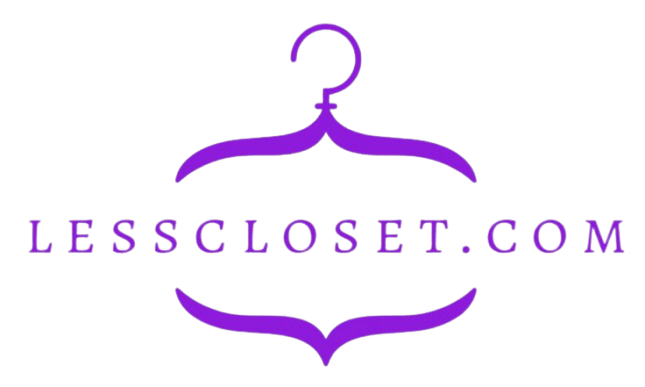5 Sustainable Fabrics Every Minimalist Should Consider
This article explores five of the most sustainable fabrics. It highlights how these fabrics are less harmful than traditional options while promoting a minimalist lifestyle.
The fabrics discussed include organic cotton, hemp, linen, bamboo, and Tencel. This article examines the advantages and disadvantages of each fabric, offers guidance on incorporating them into your wardrobe, addresses the challenges of using them, and provides insights on ensuring their sustainable production.
Contents
- Key Takeaways:
- 1. Organic Cotton
- 2. Hemp
- 3. Linen
- 4. Bamboo
- 5. Tencel
- What Makes These Fabrics Sustainable?
- How Do These Fabrics Compare to Traditional Fabrics in Terms of Sustainability?
- What Are the Benefits of Using Sustainable Fabrics for Minimalists and Their Impact on the Environment?
- How Can You Incorporate These Fabrics into Your Wardrobe?
- What Are the Challenges of Using Sustainable Fabrics?
- How Can One Ensure the Sustainability of These Fabrics in Their Production Process?
- Frequently Asked Questions
- What are the top 5 sustainable fabrics that every minimalist should consider?
- What makes organic cotton and organic linen sustainable fabrics for minimalists?
- How is linen a sustainable fabric for minimalists?
- Why is TENCEL Lyocell considered a sustainable fabric for minimalists?
- How does hemp contribute to sustainable fashion for minimalists?
- Why is recycled polyester and recycled cotton a suitable choice for minimalists looking for sustainable fabrics?
Key Takeaways:
- Organic cotton, hemp, linen, bamboo, and Tencel are sustainable fabric options for minimalists.
- These fabrics are more sustainable compared to traditional fabrics due to their lower environmental impact and use of natural materials.
- Minimalists can benefit from using sustainable fabrics by reducing their environmental footprint and supporting ethical fashion practices.
1. Organic Cotton
Organic cotton is one of the most widely used sustainable fabrics. It is cultivated without harmful pesticides or artificial plant food. This method creates a healthy environment for farmers. It also supports responsible sourcing.
Organic cotton reduces the fashion industry’s environmental impact. It counters the harmful effects of traditional cotton farming.
This fabric is grown using natural farming techniques that enhance soil health and promote biodiversity. These methods help establish a rich ecosystem that provides habitat for beneficial insect and plant species.
In contrast to conventional cotton, which heavily relies on toxic chemicals, organic farming employs practices such as crop rotation (changing the type of crop grown in a specific area to maintain soil health) and composting. These practices result in healthier crops and a more resilient environment.
Certifications like Fairtrade and GOTS not only ensure compliance with organic standards but also advocate for fair wages and safe working conditions for farmers. This creates a holistic framework that promotes sustainability alongside social responsibility.
2. Hemp
Hemp fabric is considered the most sustainable fabric in the world. It requires minimal water and no pesticides for cultivation. This makes it one of the most environmentally friendly options available in the fashion industry.
Its low-impact and durable nature has made hemp a popular choice among consumers who aim to reduce textile waste and promote circularity. Hemp is a versatile fabric that efficiently utilizes natural resources while helping to mitigate the negative environmental effects associated with synthetic fabrics.
Hemp needs 50% less land compared to cotton and significantly less water. This makes it a superior choice for environmentally conscious consumers. Its durability ensures that hemp clothing lasts longer, reducing the frequency of replacements and, consequently, waste.
Transitioning to sustainable practices in the fashion industry necessitates the adoption of hemp to encourage a more responsible approach to dressing. Hemp decomposes naturally, making it a better choice than synthetic fibers that pollute landfills.
Choosing to wear hemp fabric goes beyond comfort and style; it represents a commitment to a movement toward a more sustainable future.
3. Linen
Linen is recognized as the most sustainable fabric in the world due to its low environmental impact and easy biodegradability. This makes it a preferred choice for eco-conscious consumers.
Unlike many synthetic fabrics, linen requires less water and fewer pesticides during production. This aligns with the principles of sustainable fashion and responsible sourcing.
Its natural properties contribute to its minimal environmental footprint, positioning linen as an ideal fabric in a system where materials are reused to reduce waste.
The production process of linen is straightforward, utilizing the entire flax plant, which ensures low waste. In contrast to conventional fabrics that often rely on petroleum-based materials, linen is renewable, promoting a healthy ecosystem.
Its strong fibers ensure that linen items last longer, reducing the volume of textile waste over time. Choose linen for your next purchase and contribute to a greener planet!
4. Bamboo
Bamboo fabric is a sustainable alternative in the fashion industry due to its rapid growth and minimal pesticide requirements. This makes it a material that supports eco-friendly manufacturing processes and appeals to eco-conscious consumers.
However, these advantages can be undermined by greenwashing, which is a marketing tactic where companies falsely claim their products are environmentally friendly. It is essential to understand the sourcing and manufacturing processes to ensure that a product is truly sustainable.
You’ll love how incredibly soft bamboo textiles feel against your skin! They often surpass traditional fabrics like cotton or polyester.
Bamboo’s natural breathability allows products to retain coolness and moisture-wicking properties, making them ideal for warm climates or active lifestyles. Seek bamboo products sourced from environmentally responsible manufacturers to enjoy the benefits of extreme softness and breathability while supporting the planet’s health.
5. Tencel
TENCEL Lyocell, made from sustainably sourced wood pulp, is a revolutionary fabric that merges environmental friendliness with luxurious softness. This makes it a favored choice in sustainable fashion.
This low-impact fabric undergoes an eco-friendly manufacturing process that recycles water and solvents, resulting in a minimal environmental footprint and aligning with the principles of circular fashion.
By opting for TENCEL, consumers support responsible sourcing while enjoying the comfort and versatility of a material suitable for everything from bed sheets to ball gowns.
TENCEL biodegrades, so when the fabric’s life ends, it returns to nature without leaving toxic residues. Fashion designers appreciate TENCEL for its beautiful drape and breathability, making it the ideal choice for a wide range of garments, from activewear to evening gowns.
This trend is further supported by growing consumer awareness of the ethical implications of their purchases. More shoppers are choosing materials that offer both luxury and environmental consciousness. Act now to embrace sustainable fashion choices that benefit the planet!
What Makes These Fabrics Sustainable?
The sustainability of fabrics like organic cotton, hemp, linen, bamboo, and TENCEL is clear. They have a smaller environmental impact, are responsibly sourced, and use natural resources efficiently throughout their lifecycle.
These sustainable fabrics are more eco-friendly than conventional synthetic options. They consume less water and energy, and they contribute less to textile waste and pollution.
Many of these materials are biodegradable or recyclable. This makes them key players in a system where clothes are reused, helping to lower the overall carbon footprint of fashion.
By using renewable resources and eco-friendly farming practices, these fabrics promote biodiversity and maintain soil health. They avoid the pollution seen in traditional textiles since they don’t require harmful chemicals or extensive irrigation.
At the end of their life, these fabrics can be composted instead of ending up in landfills. This process keeps materials in use and completes a circular loop. These materials are also more durable, lasting longer for consumers and benefiting the environment.
How Do These Fabrics Compare to Traditional Fabrics in Terms of Sustainability?
The environmental impact of sustainable fabrics like organic cotton, hemp, and TENCEL Lyocell compared to traditional fabrics such as polyester and nylon highlights the urgent need for change. Sustainable fabrics use fewer resources and produce less pollution, while traditional options create significant textile waste.
Comparison of Environmental Effects: Sustainable Fabrics vs. Traditional Fabrics
- Traditional Fabrics:
- Use non-renewable fossil fuels
- Synthetic fibers take up to 200 years to biodegrade
- Contribute to significant textile waste
- Have a carbon footprint that is 3-5 times greater than sustainable fabrics
- Require 10-20 times more resources
- Release plastic microfibers that pollute waterways
- Sustainable Fabrics:
- Use renewable resources
- Natural fibers biodegrade much faster
- Produce durable, longer-lasting products from low-impact fabrics
- Can have a carbon footprint as low as one-sixth of traditional fabrics
- Show no evidence of harming the environment
The Ellen MacArthur Foundation reports that the clothing and textile industry generates over 92 million tons of waste annually. Most of this waste comes from synthetic fabrics that take decades to decompose. For example, hemp grows rapidly, needs no toxic pesticides, and uses significantly less water.
Sustainable fabrics can lower carbon emissions by up to 80% compared to traditional options. This shows why it’s crucial to choose fabrics that are responsibly sourced and certified for sustainability.
This compelling evidence highlights an exciting opportunity: by switching to sustainable fabrics, we can reduce our environmental impact and create a vibrant, sustainable future for generations to come!
What Are the Benefits of Using Sustainable Fabrics for Minimalists and Their Impact on the Environment?
Sustainable fabrics offer numerous benefits for minimalists, matching their values of simplicity and purpose through aesthetic appeal and environmental impact. Fabrics like organic cotton, TENCEL, linen, and recycled wool are responsibly sourced and produced using sustainable practices, such as closed-loop manufacturing, a system where waste is minimized by reusing materials, and regenerative farming. These fabrics make ideal additions to a minimalist wardrobe. Other options, including plant-based fibres and biodegradable fabrics, also align well with sustainable values.
These eco-friendly materials not only serve practical purposes but also promote a circular fashion approach by reducing textile waste through recycling and upcycling programs. Minimalist aesthetics feature clean lines and simple forms. Sustainable fabrics easily embody this look with understated designs that maintain a refined appearance.
The essence of minimalism fosters a sense of purpose in our consumption choices and lifestyle.
Embracing minimalism goes beyond merely reducing expenses or possessions; it emphasizes responsibility. Sustainable fabrics power this movement! Minimalists prioritize quality over quantity, investing in well-made pieces that endure for years. These garments often come from ethical and sustainable companies that utilize certification standards like Fairtrade, illustrating the advantages of choosing sustainable fabrics. Investing more upfront can lead to savings in the long run.
Examples of sustainable fabrics that align well with minimalist values include:
- Organic Cotton: This fabric is grown without harmful pesticides or synthetic fertilizers, offering a sustainable alternative to one of the world’s most popular fabrics. It is soft, breathable, and commonly used for t-shirts, dresses, and loungewear, making it easy to style in various ways.
- TENCEL Lyocell: This fabric is made from sustainably harvested wood pulp and produced through an eco-friendly fabric manufacturing process. TENCEL Lyocell is biodegradable and boasts a low environmental impact, making it a favored choice for shirts, dresses, and activewear.
- Organic Linen: Derived from the flax plant, this fabric requires minimal water and synthetic fertilizers for production. Naturally biodegradable, it has a low environmental impact and contributes to a relaxed, minimalist aesthetic.
- Recycled Wool: This naturally renewable and biodegradable material is durable, breathable, and provides insulation while remaining lightweight. It is crafted by shredding and reprocessing leftover wool scraps from factories into new fibers, retaining the premium quality of virgin wool.
In conclusion, sustainable fabrics represent a harmonious blend of style and responsibility, perfectly suited for a minimalist lifestyle. They also support the fight against greenwashing in the fashion industry. Discover the game-changing benefits of sustainable fabrics today!
How Can You Incorporate These Fabrics into Your Wardrobe?
Sustainable fabrics can easily fit into your wardrobe. Start by choosing eco-friendly materials from sustainable fashion brands.
Look for items made from organic cotton, recycled wool, and TENCEL. These choices help reduce textile waste and lower your environmental impact.
Materials like ECONYL yarn and recycled cotton are also fantastic for eco-conscious shoppers. Brands like Reformation, Patagonia, and Everlane make this transition simple.
Select versatile pieces for both casual and formal occasions. For example, consider a denim jacket made from recycled materials or a dress crafted from organic linen.
Explore brands using innovative materials like Bananatex and CIRCULOSE to enhance your sustainable wardrobe.
Transform your wardrobe by combining sustainable fabrics with your favorite items! Pair TENCEL blouses with high-quality second-hand trousers. With mindful choices, you can build a wardrobe that is both stylish and sustainable!
What Are the Challenges of Using Sustainable Fabrics?
While sustainable fabrics bring many benefits, they also come with challenges. One major issue is greenwashing, where brands claim sustainability without proper certification.
To make informed choices, learn about certification standards and label requirements. This knowledge helps you pick truly sustainable options.
Another challenge is the higher price of sustainable clothing compared to traditional options. This cost can make it tough to justify purchases when cheaper alternatives are everywhere.
Accessibility is also a concern; many sustainable brands have limited distribution channels, making it harder to find their products.
Don’t let these challenges discourage you! Use independent review sites and community forums to share insights.
Resources like the Global Fashion Agenda can help you identify genuine eco-friendly materials. The Ethical Consumer site enables you to connect with others about their brand experiences.
As interest grows in sustainable clothing, these resources are invaluable for making well-informed choices!
How Can One Ensure the Sustainability of These Fabrics in Their Production Process?
Ensuring the sustainability of fabrics during their production process requires thorough research into certification standards while demanding transparency from brands regarding their sourcing practices. Consumers should look for certifications such as GOTS (Global Organic Textile Standard), Fairtrade, and Oeko-Tex, which assure the environmental impact and ethical production of sustainable fabrics. By staying informed and making intentional choices, individuals can contribute to responsible sourcing within the fashion ecosystem and choose fabrics that are part of a circular economy.
Start by diving into the world of certifications! For instance, GOTS guarantees that textiles are made from organic materials and produced according to strict environmental criteria. Fairtrade certification emphasizes social and economic equity for workers by ensuring fair wages and safe working conditions. Oeko-Tex certification confirms that textiles are free from harmful substances, contributing to the overall sustainability of fabric manufacturing.
Engaging with brands gives you valuable insights into how they maintain the sustainability of their production methods and where they source their materials. This kind of interaction not only holds brands accountable but also fosters a culture of transparency and ethical practices in the fashion industry.
Watch this video to discover how sustainable fabrics reduce microplastics and support a cleaner environment!
Frequently Asked Questions
What are the top 5 sustainable fabrics that every minimalist should consider?
The top 5 sustainable fabrics that every minimalist should consider are organic cotton, linen, TENCEL, hemp, and recycled polyester. These fabrics are environmentally friendly and have a lower impact on the planet compared to traditional fabrics, especially when sourced from brands that prioritize responsible sourcing.
What makes organic cotton and organic linen sustainable fabrics for minimalists?
Organic cotton is grown without harmful pesticides and chemicals, making it a more sustainable option. It also uses less water and energy during production, which helps mitigate the environmental impact of the fashion industry. This makes it a better choice for the environment and for minimalists who value simplicity.
How is linen a sustainable fabric for minimalists?
Linen, made from the fibers of the flax plant, requires minimal water and pesticides to grow. It is also a strong and durable fabric. Often noted for its biodegradability, linen is a long-lasting option for minimalists who prioritize responsible sourcing and eco-friendly materials.
Why is TENCEL Lyocell considered a sustainable fabric for minimalists?
TENCEL Lyocell, made from wood pulp sourced from sustainably managed forests, adheres to certification standards like GOTS and Oeko-Tex. It is produced using a closed-loop process, a hallmark of circular fashion, meaning that the solvents used are recycled and reused, reducing waste and pollution associated with synthetic fabrics. TENCEL Lyocell is also biodegradable, contributing to circular economy practices, making it an eco-friendly option for minimalists.
How does hemp contribute to sustainable fashion for minimalists?
Hemp fabric is highly sustainable, requiring minimal water, pesticides, and land to grow. It is versatile and can be used for clothing, accessories, and home goods, making it ideal for minimalists embracing circular fashion.
What sustainable fabrics have you tried? Join the conversation!
Why is recycled polyester and recycled cotton a suitable choice for minimalists looking for sustainable fabrics?
Recycled polyester is made from plastic bottles that have been used, ECONYL yarn (a type of nylon made from ocean waste), and other waste materials. This process reduces the need for new resources and cuts down on textile waste.
It also requires less energy and water during production, making it eco-friendly. By choosing recycled polyester and cotton, minimalists can help reduce plastic waste and pollution, promoting a healthier fashion industry.





